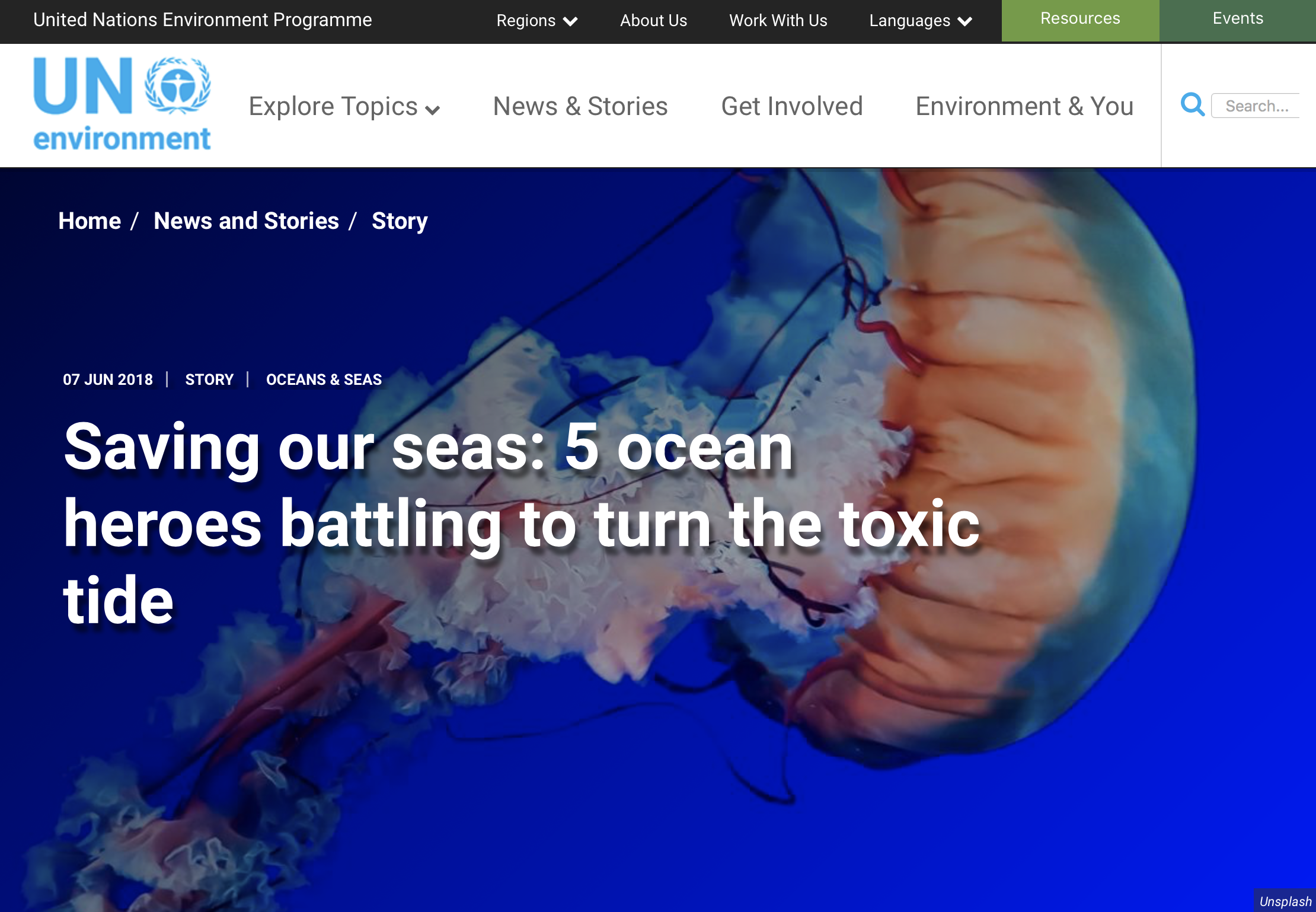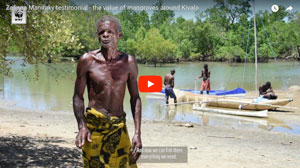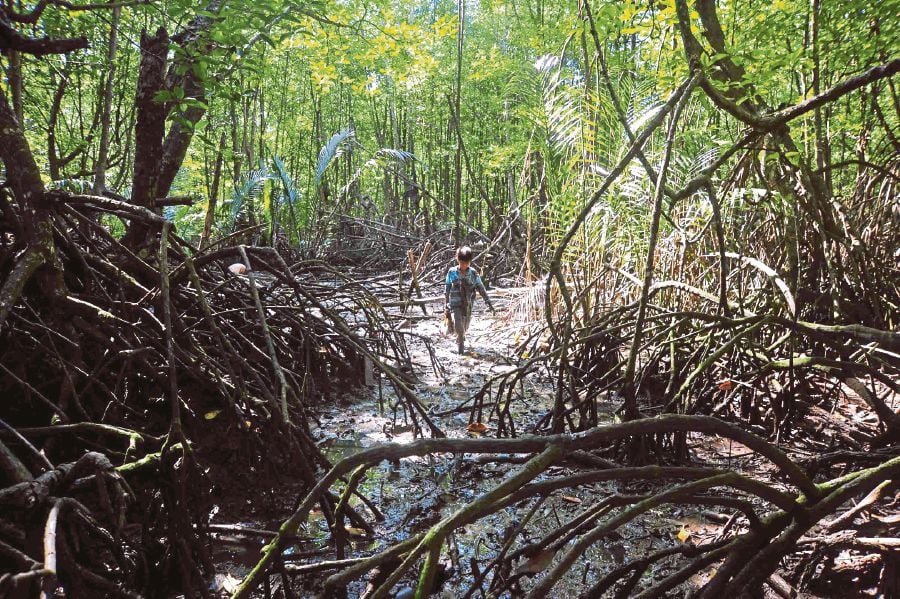We need your help – Vote for your favorite mangrove photos! 
GLOBAL – Throughout the month of July, we asked for and received stunning photos from around the world for our 4th annual global photography exhibition We would like to thank each and every person who contributed to this project! Vote for your favorite photos to decide which will receive the People’s Choice Award. There's still time to submit your photos! We've extended our photo contest until August 15th –
send in your photos here. Or use
#mangroveactionday to submit photos on Instagram!
Donate to Protect MangrovesProtect mangroves and the coastal communities that rely on them. Join MAP by pledging to defend mangrove forests today!
READ MORE GLOBAL
Why mangroves matter: Experts respond on International Mangrove Day

GLOBAL – The importance of the protective mangrove buffer zone cannot be overstated. Mangroves are living buffers against the forces of storms and waves that can otherwise devastate a coastline. In regions where these coastal fringe forests have been cleared, tremendous problems of erosion and siltation have arisen, and terrible losses to human life and property have occurred due to destructive hurricanes, storm surges and tsunamis. Today there is a growing urgency to recognize the importance of conserving and restoring protective mangrove greenbelts to lessen the dangers from future catastrophes, because as oceans warm and sea levels rise, so will the frequency and intensity of hurricanes and storm surges. Seeking the most effective path toward long-term mangrove conservation and recovery, Mangrove Action Project (MAP) promotes the concept and practice of community-based ecological mangrove restoration (CBEMR). This holistic approach to mangrove restoration views the proposed plant and animal communities to be restored as part of a larger ecosystem, connected with other ecological communities that also have functions to be protected or restored. READ MORE
Trash Hero recognised by UN Environment

GLOBAL – From the icy splendour of the Arctic to the inky depths of the Mariana ocean trench, plastic waste is threatening our seas, killing our wildlife and polluting our food chain. The facts are undeniable: each year more than 8 million tonnes of plastic enter our oceans. According to one estimate, 99 per cent of seabirds will have ingested plastic by the middle of this century. It is a sobering picture, but working together we can change this narrative. And we can take inspiration from individuals across the globe who are doing all they can to stem the toxic tide and advocate for long-term changes that will permanently redefine our relationship with plastics. To celebrate World Oceans Day, we’re profiling a few remarkable people who are fighting the good fight for our seas. READ MORE
AFRICA
Integrated Rice–Mangrove Cultivation brings Renewed Hope to Farmers.

WEST AFRICA – Rice–mangrove integration, also known as rice agro–silviculture, is a best practice employed in several African countries such as The Gambia, Guinea and Senegal as a smart way of sustaining food security while increasing resilience to climate impacts and promoting biodiversity conservation. In other countries, this practice concentrates on rehabilitating abandoned rice farms and managing soil and water. The USAID/West Africa’s Biodiversity and Climate Change Program (WA BiCC) approach involves planting mangroves on the edges of rice farms to prevent the loss of farmland and crops to erosion as well as to protect crops from pests. This initiative was piloted in 2017 in selected communities in Sierra Leone’s coastal areas. The intervention initially met a great deal of apprehension from community members. But now, eight months into the pilot program, beneficiary-farmers are beginning to see the potential for rice-mangrove integration. A climate change vulnerability assessment, conducted by WA BiCC in the coastal landscape of Sierra Leone in 2016, revealed that about 1% of mangrove forests in the Sierra Leone Coastal Landscape Complex are depleted annually. READ MORE
The value of mangroves in Kivalo

MADAGASCAR – The west coast of Madagascar boasts the largest and most intact stretches of mangrove forests in the WIO region. These forests are home to endangered endemic birds and provide shelter and breeding grounds for marine species that are critically important to local livelihoods. Mangroves also serve key ecological functions, from protecting coastlines to maintaining water quality. Despite their importance, large swaths of mangrove area have been lost, and these ecosystems remain underrepresented within the Madagascar protected area system. Indeed, the Tsiribihina-Manambolo mangroves area has been identified as a WWF priority landscape To preserve this area, WWF implement a landscape conservation programme which aims to establish an effective community-based natural resources management, and to improve traditional fisheries. READ MORE
ASIA
Trash Hero Partners with MAP

THAILAND – Plastic pollution is one of the most pressing environmental issues of our time. Scientists have tried to measure just how much plastic ends up in our Oceans and found more than 8 million tons of plastic are dumped in our oceans every year. This significantly impacts on marine wildlife, who often mistake marine debris for food and clog their intestines or they become trapped in plastic waste and discarded fishing nets. Plastic pollution affects nearly 700 different marine species with over 100 million marine mammals and turtles in the North Pacific being killed every year by plastic in the Ocean. The plastic problem is not much bigger anywhere else than in Thailand where they are ranked 6th among countries in the world with the highest amounts of plastic production and usage. Thailand has been recently plagued with two high profile deaths of a rare pilot whale and endangered green turtle whose autopsies both showed stomachs packed with plastic. The whale, specifically, had around 80 plastic bags found in its stomach. This led the basis for MAP-Thailand’s most recent Environmental Education (EE) class on Thursday 19th July 2018 held at Bang Kang Khao school, Sikao District, Trang. READ MORE
On our love affair with Malaysian mangroves

MALAYSIA – No matter how sturdy they seem to be, or how eerie they may appear, mangrove forests deserve vigilant attention and tender loving care. Caring for mangroves is a simple, straightforward love affair. Just by setting them free from vicious anthropogenic disturbances, they in return shall unconditionally defend and serve us to the best of their ability. As a matter of fact, they have been doing this for a very long time. Mangrove forests provide multiple ecosystem services and benefits to humans and nature. Their full functions and roles are still way beyond our understanding. But a miniscule portion of their gifts have been identified by scientists, and many more aspects are yet to be discovered. Some of their documented functions are as a regulator of various natural cycles and processes. For instance, mangroves are identified as the most efficient tropical habitat to capture and fix atmospheric carbon in the pursuit to mitigate the increase in temperature and to adapt to global climate change. They are also able to efficiently absorb and sustain water and precipitation. READ MORE
Vietnamese farmers are migrating en masse to escape climate change

VIETNAM – At the Southern end of Vietnam lies the Mekong Delta. It’s Vietnamese name, Cuu Long means “Nine Dragons,” referring to the nine rivers that come from six countries, and meet there, ending a journey of several thousand kilometres to the sea. The Mekong Delta is the most fertile area in Vietnam, and also the most fragile. It is the country’s rice bowl, and it is now slowly sinking into the sea. The Mekong Delta is the only place in the entire river basin where rice can be grown and harvested 7 times a year. But climate change and other human activity has begun to turn this oasis into a waste land. The delta is rapidly urbanizing and that is requiring more extraction of groundwater to provide for the needs of a burgeoning population. The water extraction projects have caused many local waterways to sink and dry up providing seawater an entry way into the delta poisoning the rich soil. Meanwhile, erosion and drought is affecting productivity while leaving homes and infrastructure to collapse. READ MORE
This shocking chart shows the true impact of plastic on our planet

PHILLIPINES – In February of 2018, a dead sperm whale washed up on along the picturesque shoreline of Cabo de Palos in Spain. Officials noted that the whale was unusually thin, and a necropsy confirmed that the whale died from an acute abdominal infection. Put simply, the whale ingested so much plastic debris – 67 lbs worth – that its digestive system ruptured.Today’s infographic comes to us from Custom Made, and it helps put the growing marine debris problem in perspective. VIEW GRAPHS
AMERICAS
Let’s celebrate mangroves and blue carbon!

EL SALVADORE – Did you know that mangroves act like a water and air purifier for our Earth? They make up what are known as ‘blue carbon ecosystems’ that include tidal marshes, mangroves seagrass and the marine life that live within them. Together they make up the ocean’s natural infrastructure that captures and stores carbon. Less than 0.5% of the coast is covered by this ecosystem, yet it is responsible for “70% of the carbon permanently stored in the marine realm.” But these ecosystems are rapidly diminishing, and their preservation is essential to the long-term environmental and economic sustainability of people worldwide, like in the Lower Lempa of El Salvador. This year, we are celebrating our joining the International Partnership for Blue Carbon, a network of over 30 governmental, research and nonprofit institutions working to preserve and protect coastal blue carbon ecosystems. READ MORE
LAST WORD
Dear Mangrove Action Project,
I hope this email finds you well and that you’re having a nice week.
My name is Ella Morgan, and I am a Researcher at the BBC Natural History Unit in the UK. We have just started production of a 5-part, four-year natural history project about plants, that we are currently calling ’Green Planet'. This will have a similar scope and ambition to our recent series Planet Earth II and Blue Planet II, and will build upon our work in the 1995 series ‘The Private Life of Plants’.
I am currently in the process of digging out stories about the world’s most spectacular plants, in terms of their behaviour and interactions with other organisms, and have been particularly looking into mangrove stories. I have heard about a few interactions that I would love to know a bit more about, and was wondering if you might be able to help. Do you know about otters fishing in mangroves in Malaysia? If so, where and when might be able to film this? Also, are there macaques that go swimming for crabs in the mangroves? If so, where is this? Finally, where would be the best place to film fireflies flashing in mangroves?
Do you have any other suggestions, or contacts who it might be worth me reaching out to about some more detail on these topics?
Thanks so much in advance for your time, and I look forward to hearing back from you,
Kindest Regards
Ella Morgan
Researcher – Green Planet | BBC Natural History Unit
Rm 0.12, 7-9 TPR | Broadcasting House | Whiteladies Road | Bristol | BS8 2LR


























